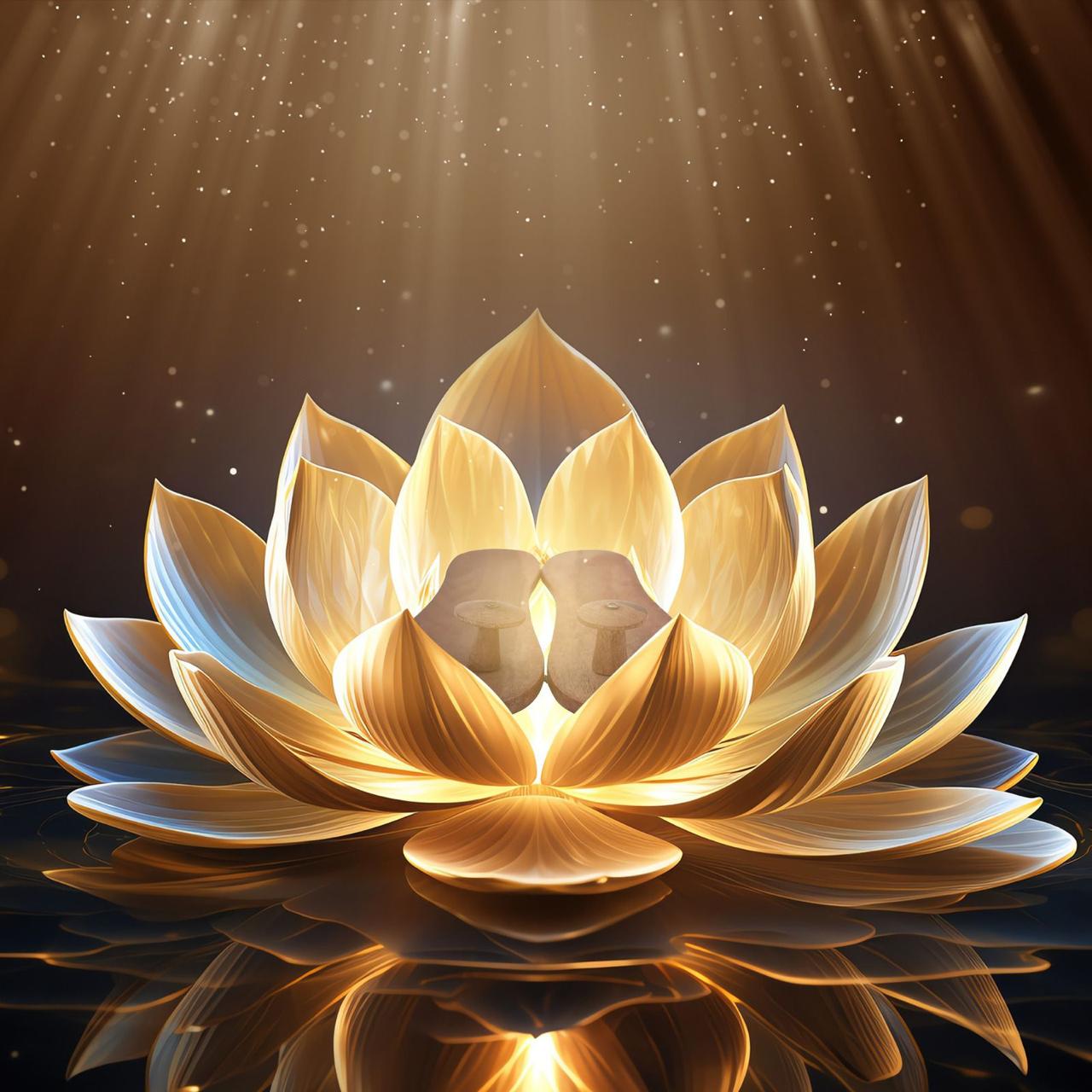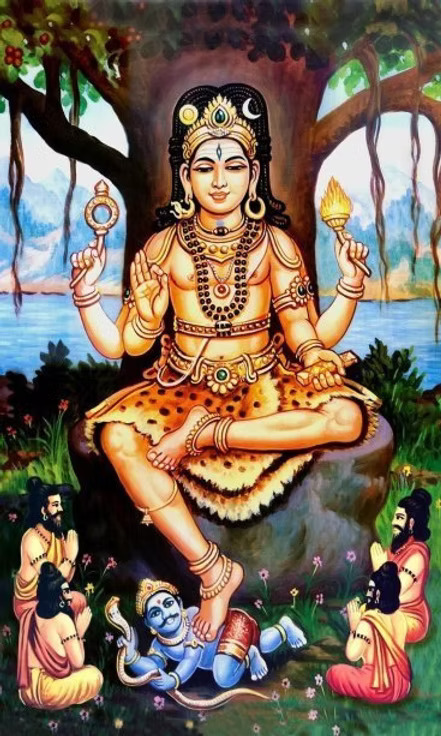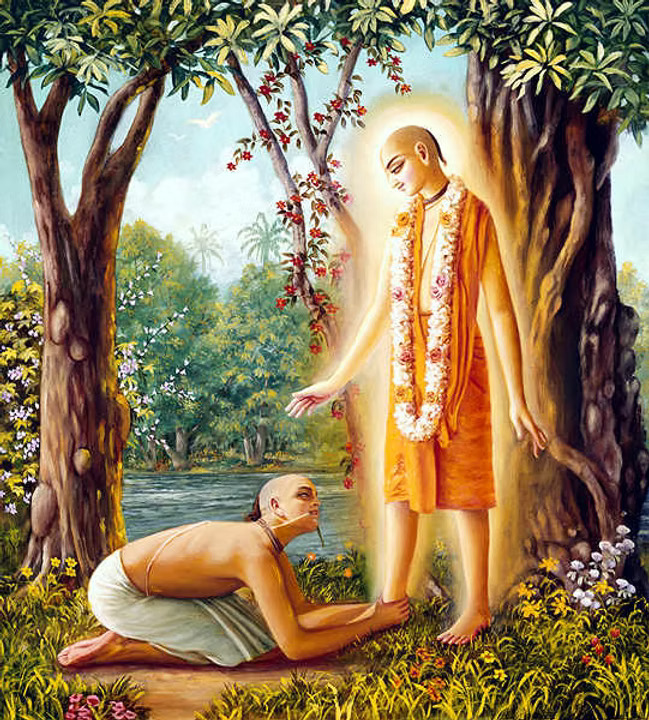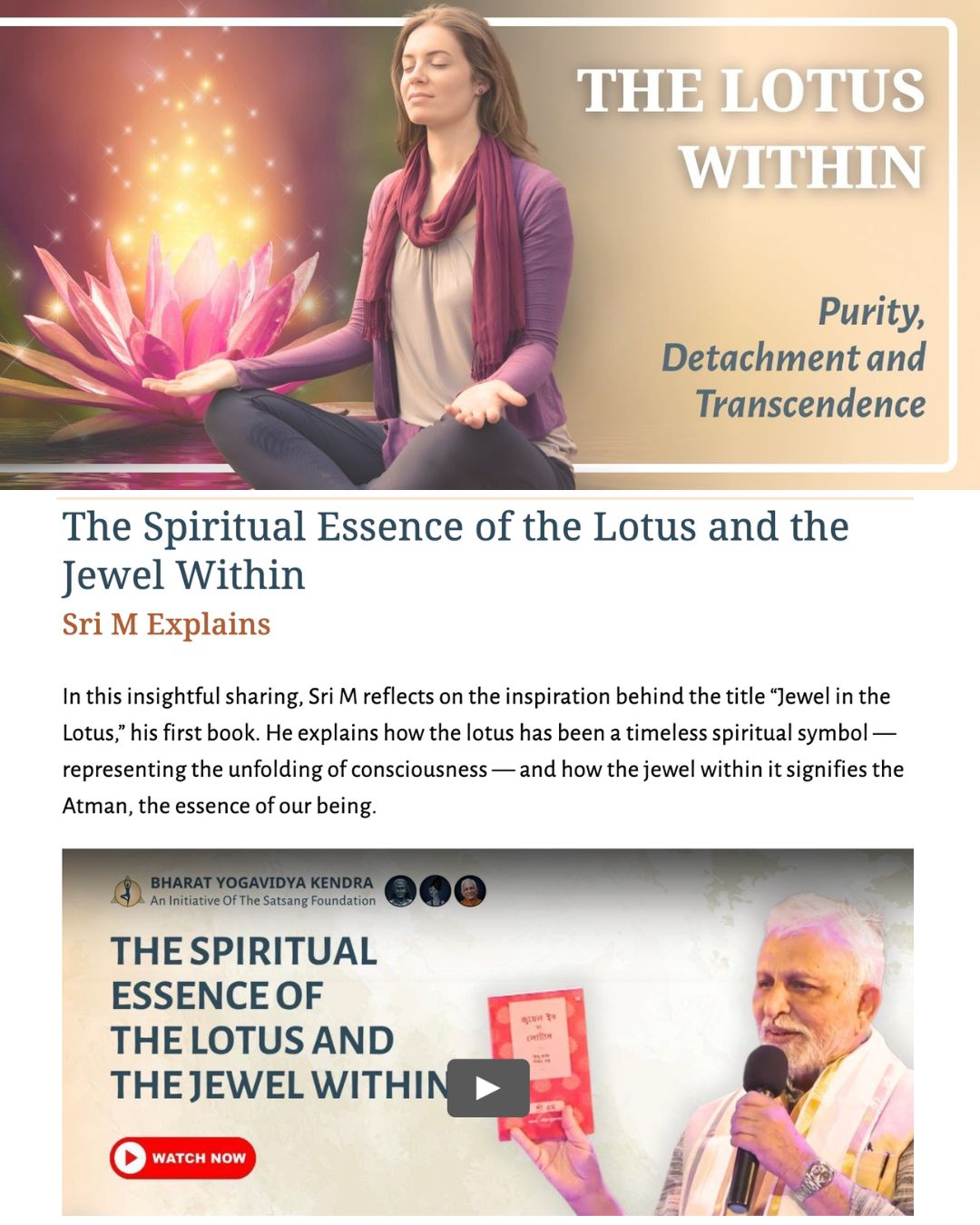Guru Deva: Igniting & Guiding the Inner Flame
Arjuna and Duryodhana visited Lord Krishna to enlist his help for the Kurukshetra war. He offered his army (Narayani Sena) and himself, unarmed, to either side, Duryodhana chose the mighty Narayani Sena army. While Arjuna was thrilled to have Lord Krishna as his charioteer. Krishna’s presence and guidance were instrumental in shaping the war’s course and ultimately, its outcome. The word ‘Guru’ has a deep meaning. Gu in Guru means Darkness and Ru means Light. So a Guru is an embodiment of the divine light who dispels darkness from our lives.

The Dakshinamurti Stotram by Shankaracharya contains some of the most profound teachings of Advaita Vedanta. This transformative knowledge is capable of destroying the Mula Avidya (fundamental ignorance) that is the ultimate cause for all suffering. Thus the Dakshinamurti Stotram is Moksha Shastra, a scriptural teaching that can lead to one’s liberation.
This Stotra is also a superb work of poetry set in a meter known as Shardula Vikridita. It is primarily a prayer for the worship of Dakshinamurti and secondarily for worshipping any teacher as the form of God.
Legend associated with Sri Dakshinamurti Stotram

Lord Brahma had four Manas Putra (mind born sons). Their names were: Sanaka, Sanandana, Sanatana and Sanat Sujata. These four sons of Brahma were unusually precocious. At a young age they wanted to pursue spiritual wisdom. So they left their father. Apparently the search went on for very long time. When they found their Guru, they were old. They literally searched for a lifetime.
They finally went to Mount Kailash to meet Lord Shiva. He appears as a young teacher. He sits at the foot of a banyan tree. These elderly shishyas sit near him. He proceeds to teach them in silence. The reality Brahman – is beyond words. A young guru, imparting knowledge of Brahman through silence, surrounded by rishis who are firmly established in wisdom.
चित्रं वटतरोर्मूले वृद्धाः शिष्या गुरुर्युवा ।
गुरोस्तु मौनं व्याख्यानं शिष्यास्तुच्छिन्नसंशयाः ॥३॥
This is symbolic. The four disciples represent each of the four Vedas It also points out the fact that Vedas are Apourusheyam – not created by human being. God is the source of knowledge that constitutes Veda. The one whose form may seem separately as a God (Eshwara), Guru, and Atma – but is actually all the same, O the one who pervades the entire universe, I bow to you, Lord Dakshinamurthy
Gurus emerge when the student is ready. Here is an interesting incident from the early life of Swami Chinmayananda
A mere glance from Ramana Maharishi
A young student after his high school exams was roaming around South India by train. At one point all the passengers bowed down to a great temple in a land with majestic hills. The student learnt that this was Thiruvanamalai. Thereafter, the talk of the fellow travellers turned to Ramana Maharshi. The word “Maharshi” conjured up in his mind ancient forest retreats and superhuman beings of divine glow. Though at that time he was a convinced atheist, something attracted him to visit the Maharshi’s Ashram.
At the Ashram he was told that the Maharshi was in the hall and anybody was free to walk in and see him. Let us hear his experience directly.
As I entered, I saw on the couch an elderly man, wearing but a loincloth, reclining against a round boster. I sat down at the very foot of the couch. The Maharshi suddenly opened his eyes and looked straight into mine. I looked into his. A mere look, that was all. I felt that the Maharshi was, in that split moment, looking deep into me – and I was sure that he saw all my shallowness, confusions, faithlessness, imperfections and fears.
I cannot explain what happened in that one split moment. I felt opened, cleaned, healed and emptied! A whirl of confusions, my atheism dropping away, but scepticism flooding into questions, wonder, and search. My reason gave me strength and I said to myself, “It is all mesmerism, my own foolishness.”. Thus assuring myself, I got up and walked away.
But the boy who left the hall was not the boy who had gone in some ten minutes before. After my college days, my work as a journalist, and after my years of stay at Uttarkashi at the feet of my master – Tapovanam, I know that what I gained on the Ganges banks was that which had been given to me years before by the saint of Tiruvannamalai on that hot summer day – by a mere look.
Guru is God

Just by remembering your Guru, one can overcome all obstacles. Hence, the Guru is remembered at the beginning of any task by one and all.
All the sages, saints, prophets, world teachers, incarnations, great men have had their own Gurus, however great they might have been. Svetaketu learnt the nature of Truth from Uddalaka, Maitreyi from Yajnavalkya, Bhrigu from Varuna, Narada from Sanatkumara, Nachiketas from Yama, Indra from Prajapati; Lord Krishna sat at the feet of His Guru Sandipani. Lord Rama had Guru Vasishtha who gave Him Upadesa. Even Devas have Brihaspati as their Guru.
Blessed and lucky are those who find a Guru in this life. However realisation cannot come to you as a miracle done by your Guru. Guru Kripa, grace of the Guru, is very necessary. That does not mean that the disciple should sit idle. He must work hard and follow the teachings of his Guru.
The End

